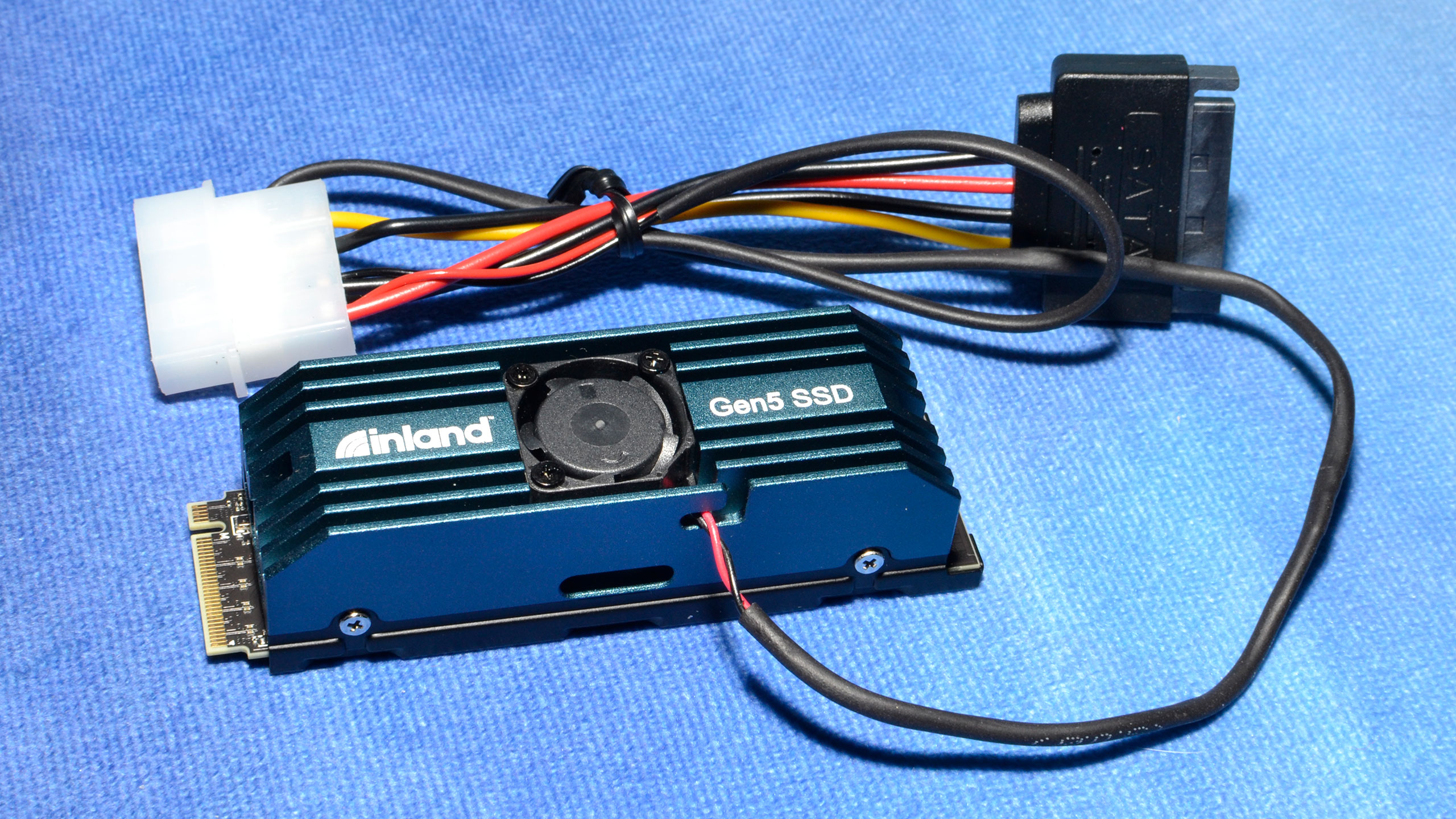Why you can trust Tom's Hardware
Comparison Products
The Inland TD510 faces two other PCIe 5.0 SSDs, the Phison E26 ES and the Gigabyte Aorus 10000. However, the Crucial T700 is not a final product yet, so we didn't include those results here. There are also a slew of high-end PCIe 4.0 drives for comparison, including the Samsung 990 Pro, the Solidigm P44 Pro, the Adata Legend 960, the Corsair MP600 Pro LPX, the Crucial P5 Plus, the Inland Gaming Performance Plus, and the Sabrent Rocket 4 Plus-G.
Trace Testing - 3DMark Storage Benchmark
Built for gamers, 3DMark’s Storage Benchmark focuses on real-world gaming performance. Each round in this benchmark stresses storage based on gaming activities including loading games, saving progress, installing game files, and recording gameplay video streams.
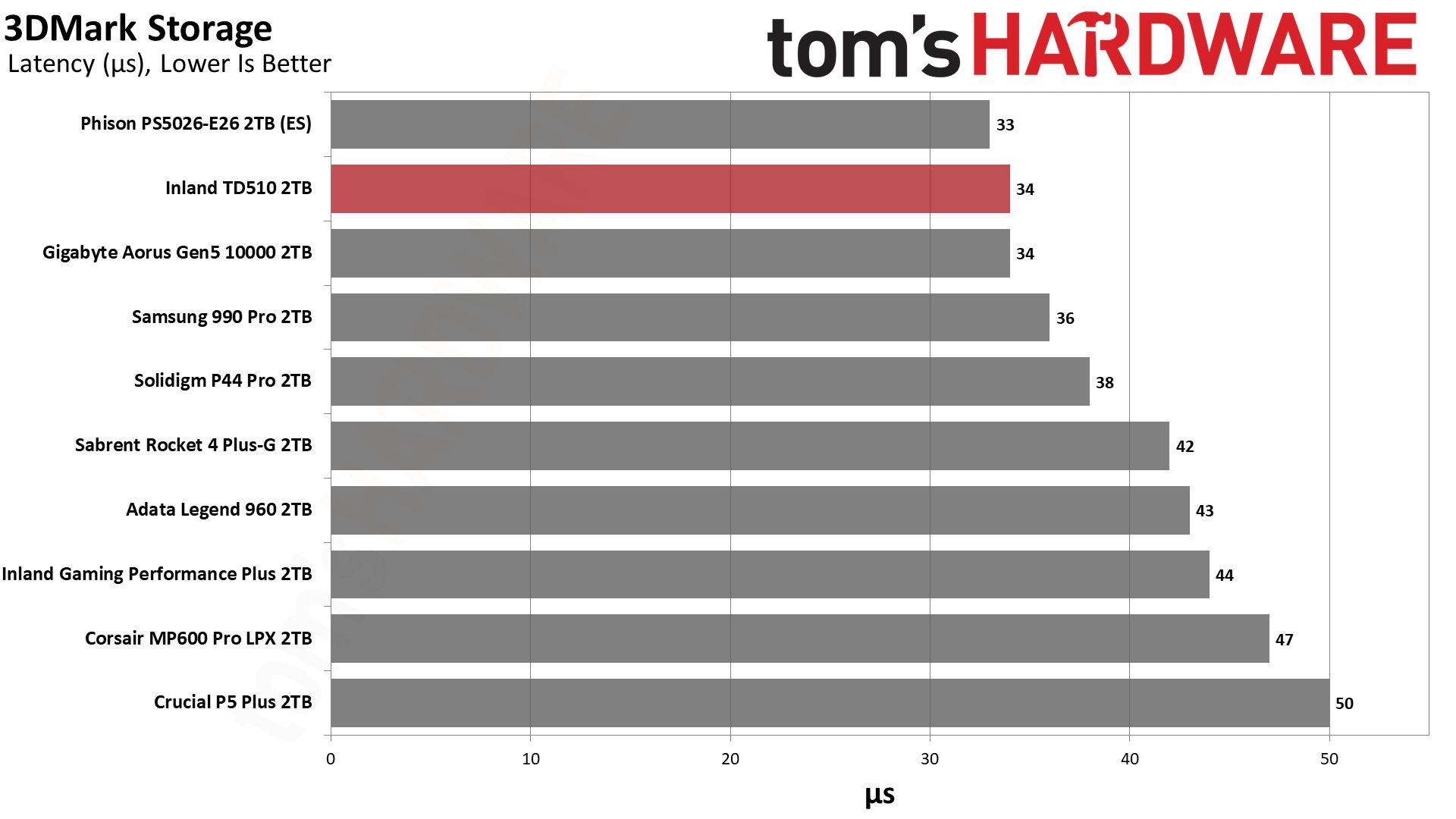
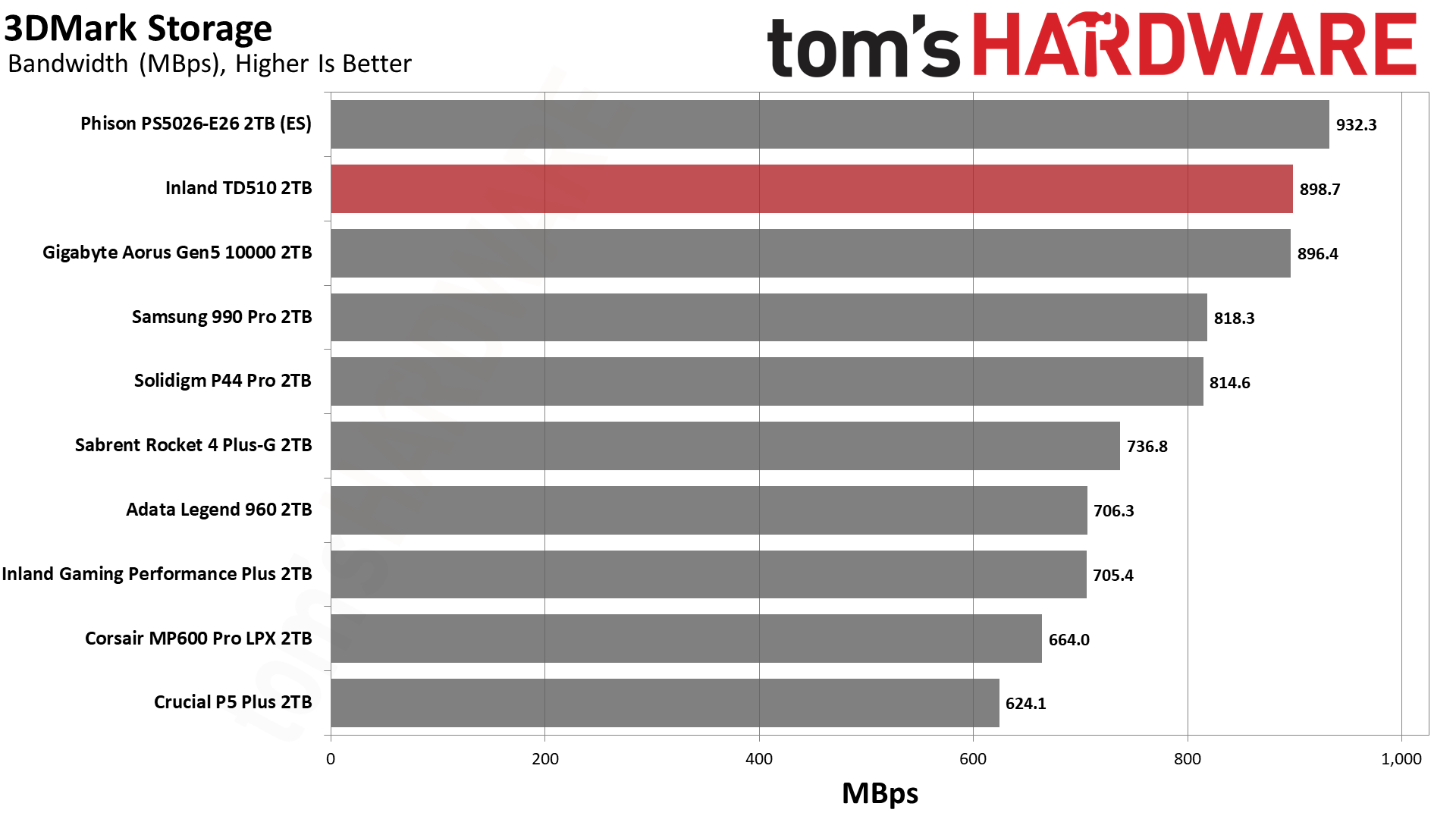
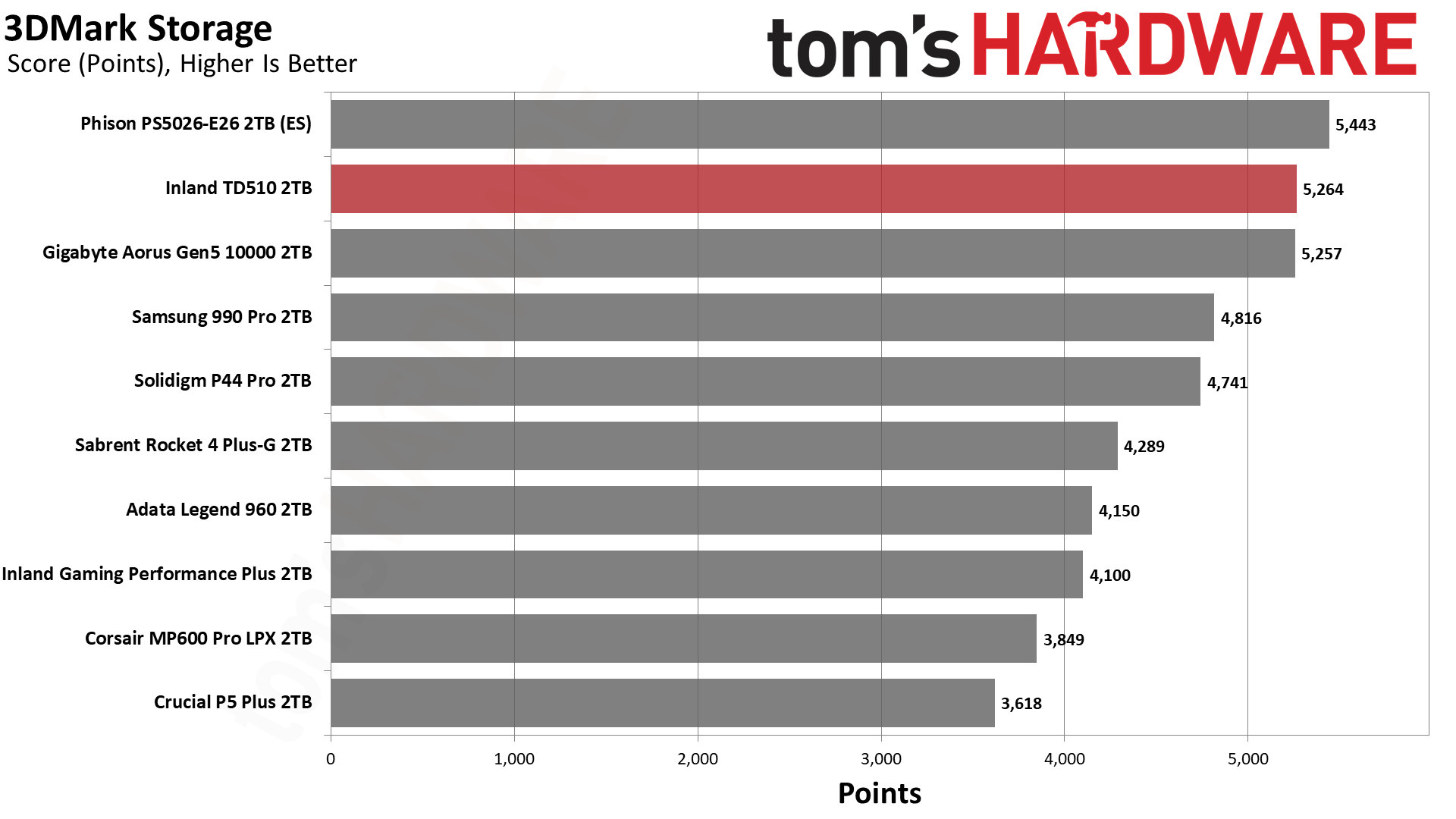
No surprises here, as the TD510 is one of the fastest drives we've ever tested in 3DMark. The Phison E26 listed in the charts is an early engineering sample, not a product you can buy on the shelves. However, this gives us a taste of the theoretical heights of performance with PCIe 5.0 SSDs powered by the Phison E26 SSD controller. Drives with similar levels of performance will arrive later this year.
Trace Testing – PCMark 10 Storage Benchmark
PCMark 10 is a trace-based benchmark that uses a wide-ranging set of real-world traces from popular applications and everyday tasks to measure the performance of storage devices.

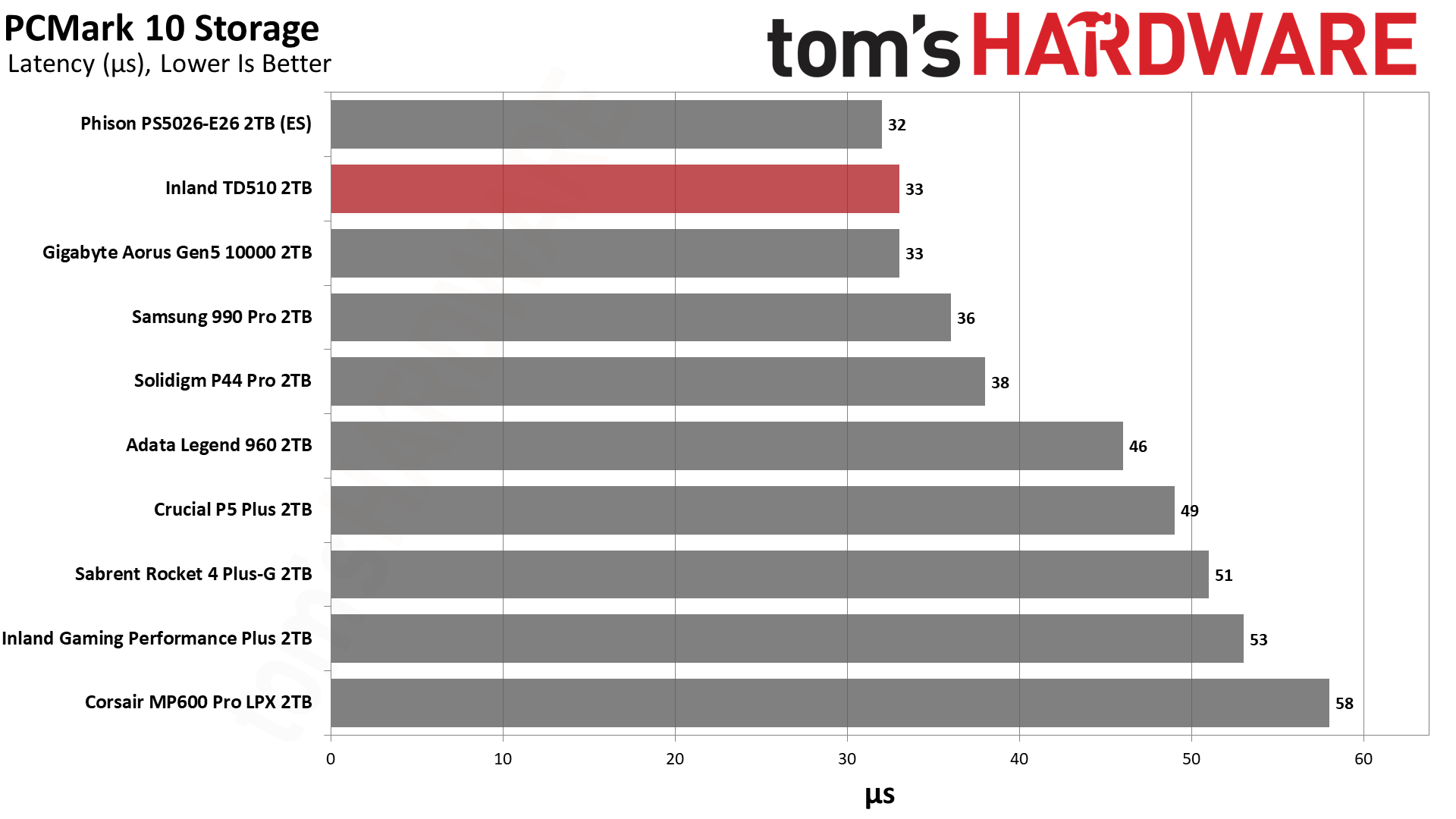
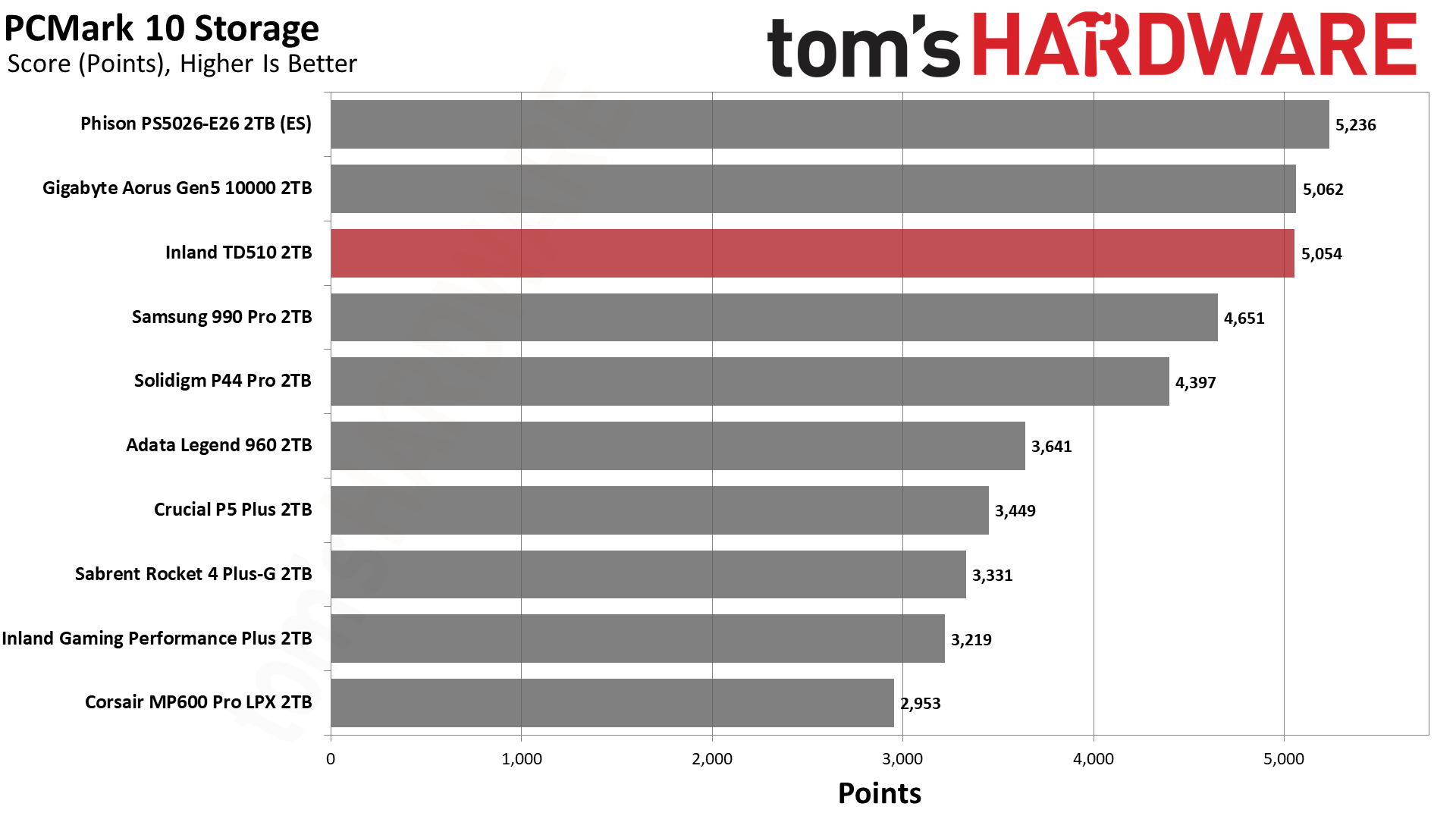
The TD510 also does quite well in PCMark 10, beating all of the PCIe 4.0 SSDs and effectively tying the Gigabyte Aorus Gen5 10000.
Transfer Rates – DiskBench
We use the DiskBench storage benchmarking tool to test file transfer performance with a custom, 50GB dataset. We copy 31,227 files of various types, such as pictures, PDFs, and videos to a new folder and then follow-up with a reading test of a newly-written 6.5GB zip file.
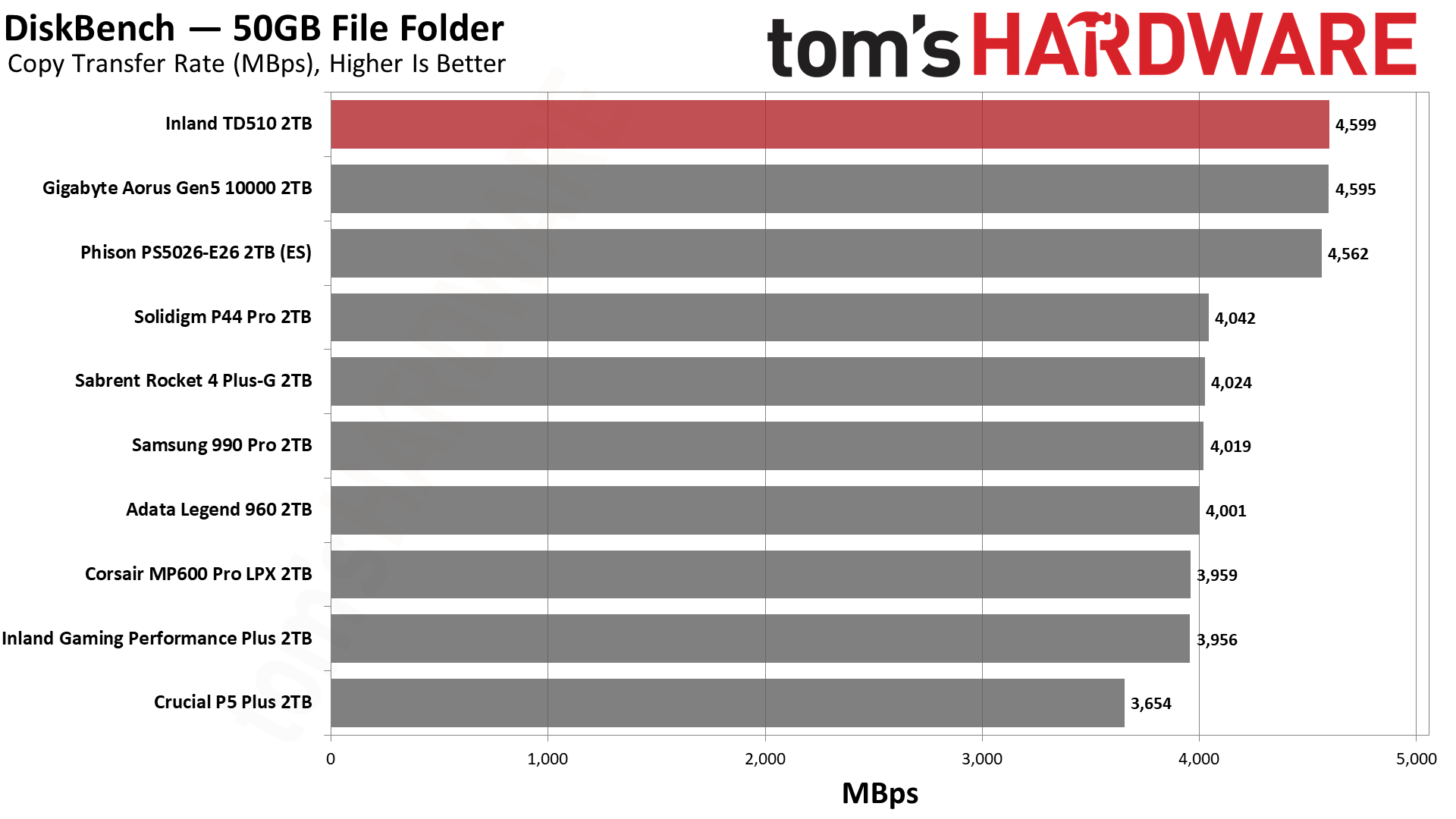
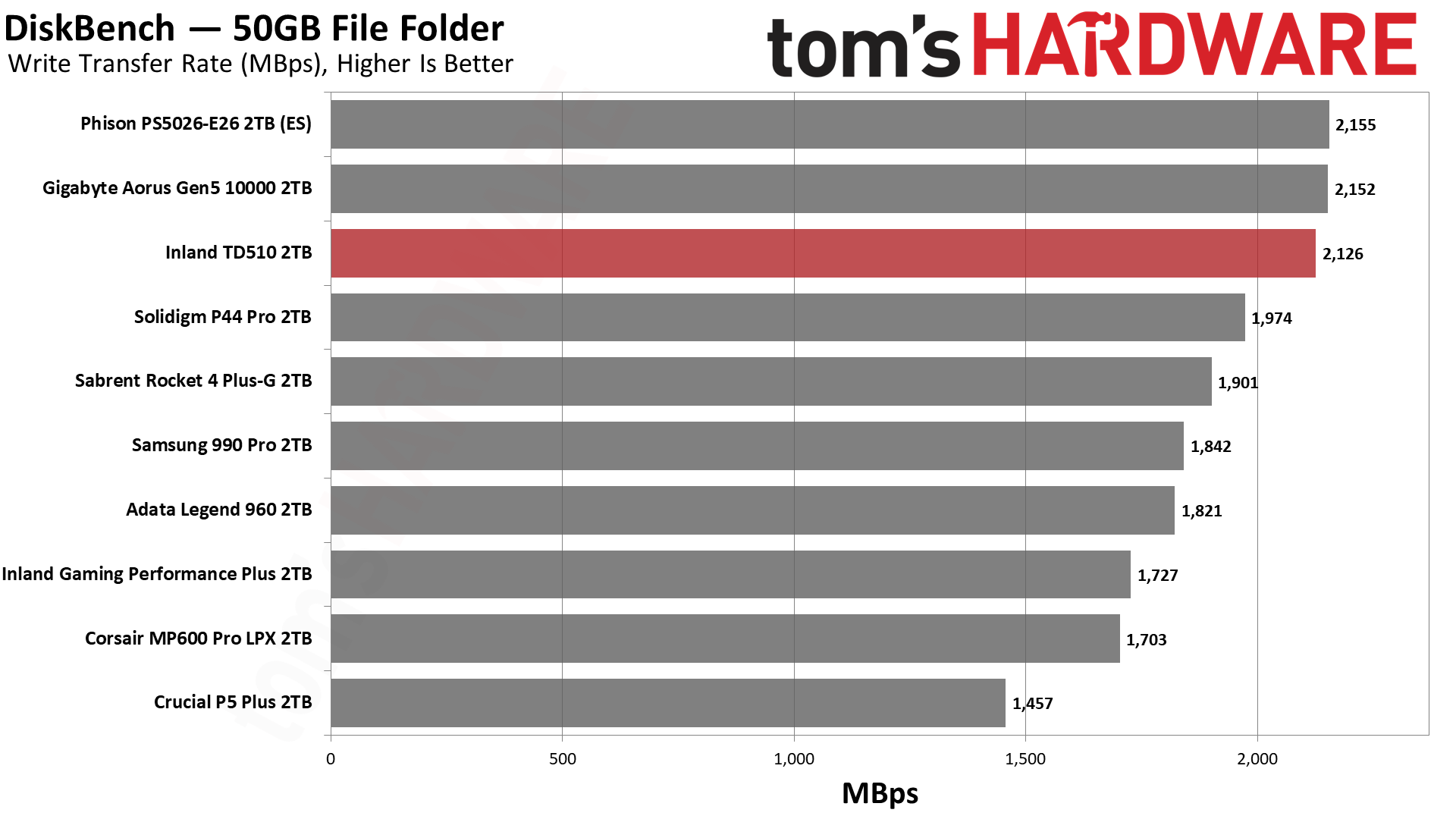

Nothing copies files like a PCIe 5.0 SSD. The TD510 comes out on top thanks to the additional bandwidth afforded by the PCIe 5.0 interface.
Get Tom's Hardware's best news and in-depth reviews, straight to your inbox.
Synthetic Testing - ATTO / CrystalDiskMark
ATTO and CrystalDiskMark (CDM) are free and easy-to-use storage benchmarking tools that SSD vendors commonly use to assign performance specifications to their products. Both of these tools give us insight into how each device handles different file sizes.
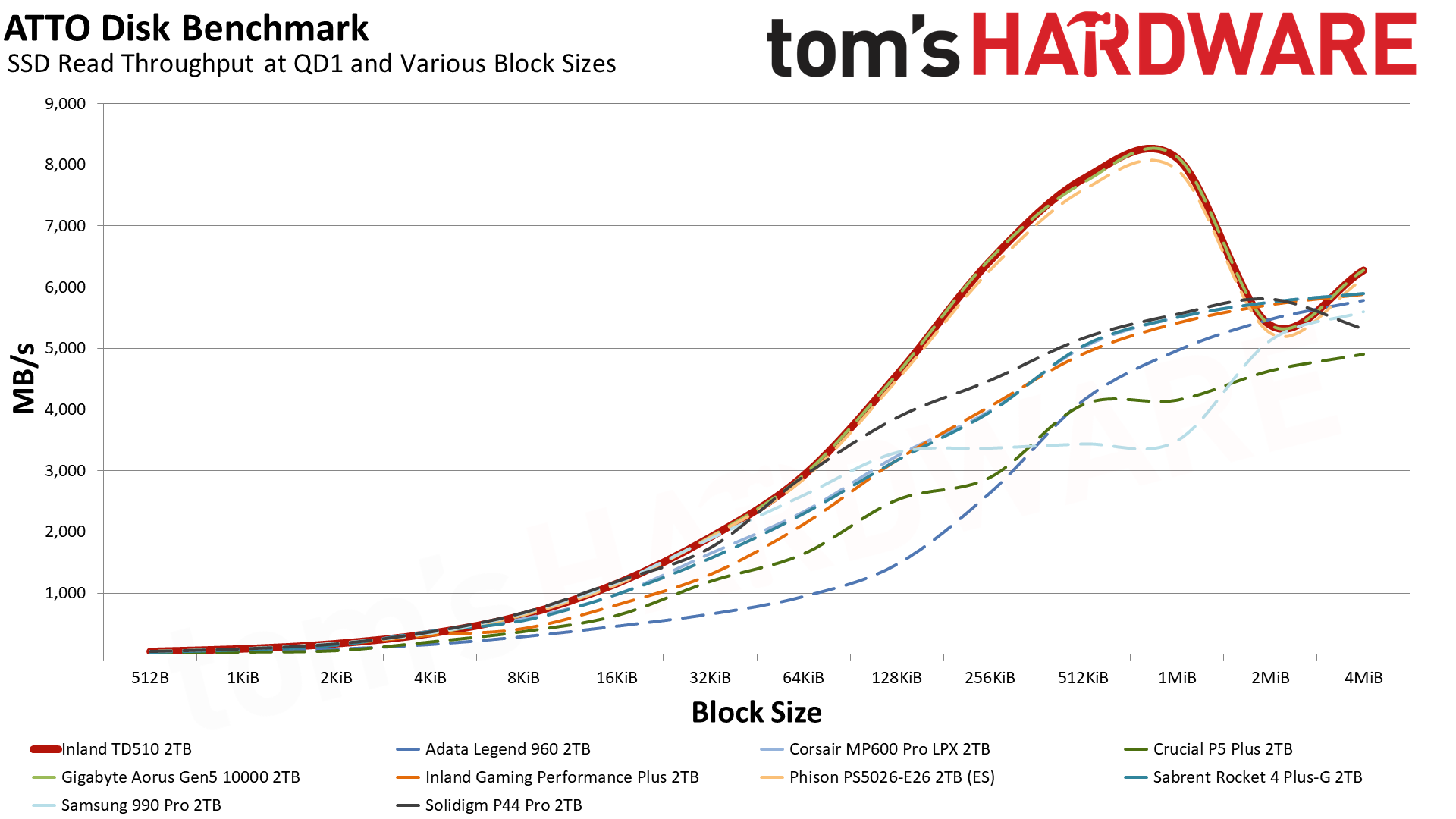
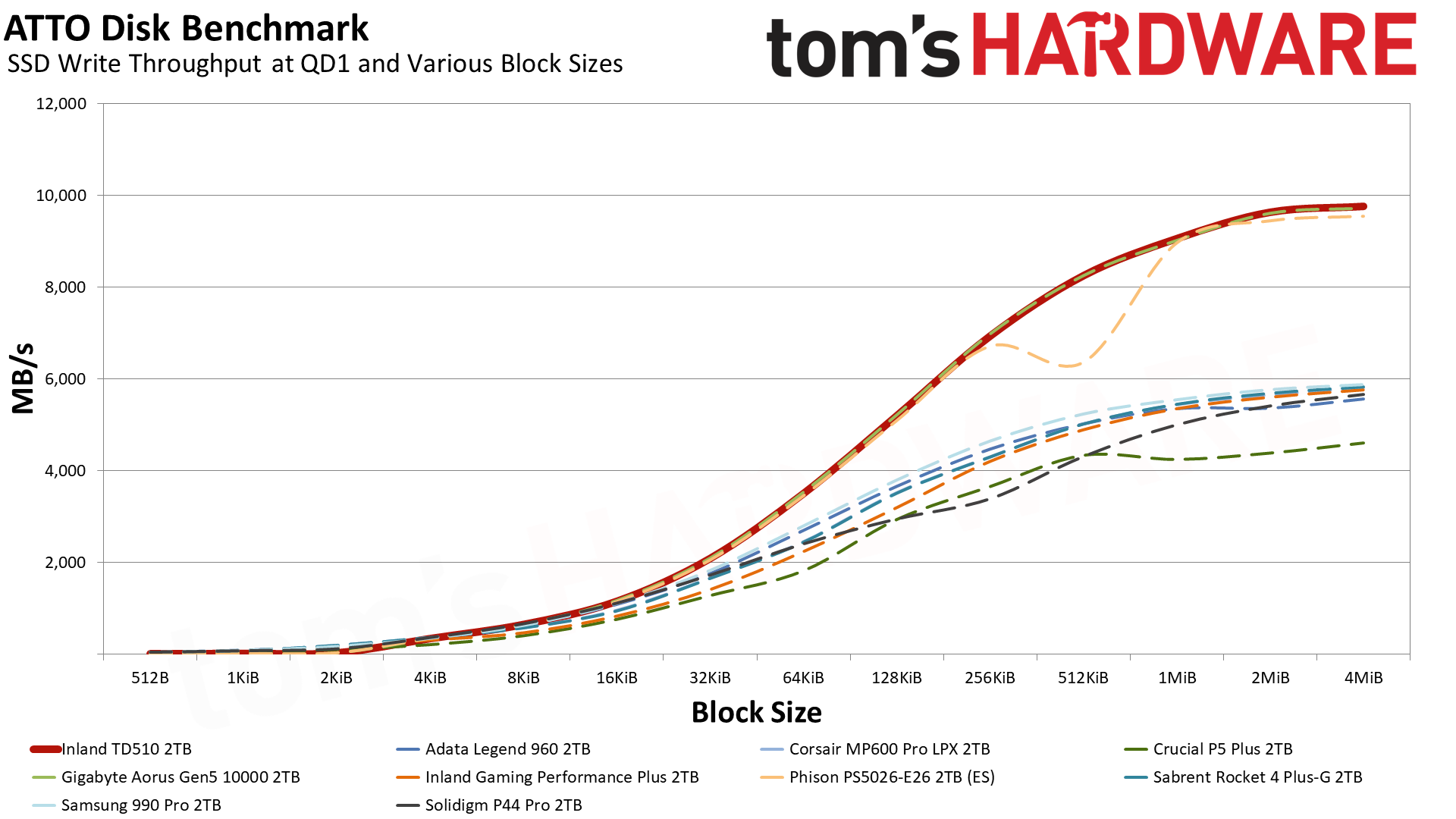

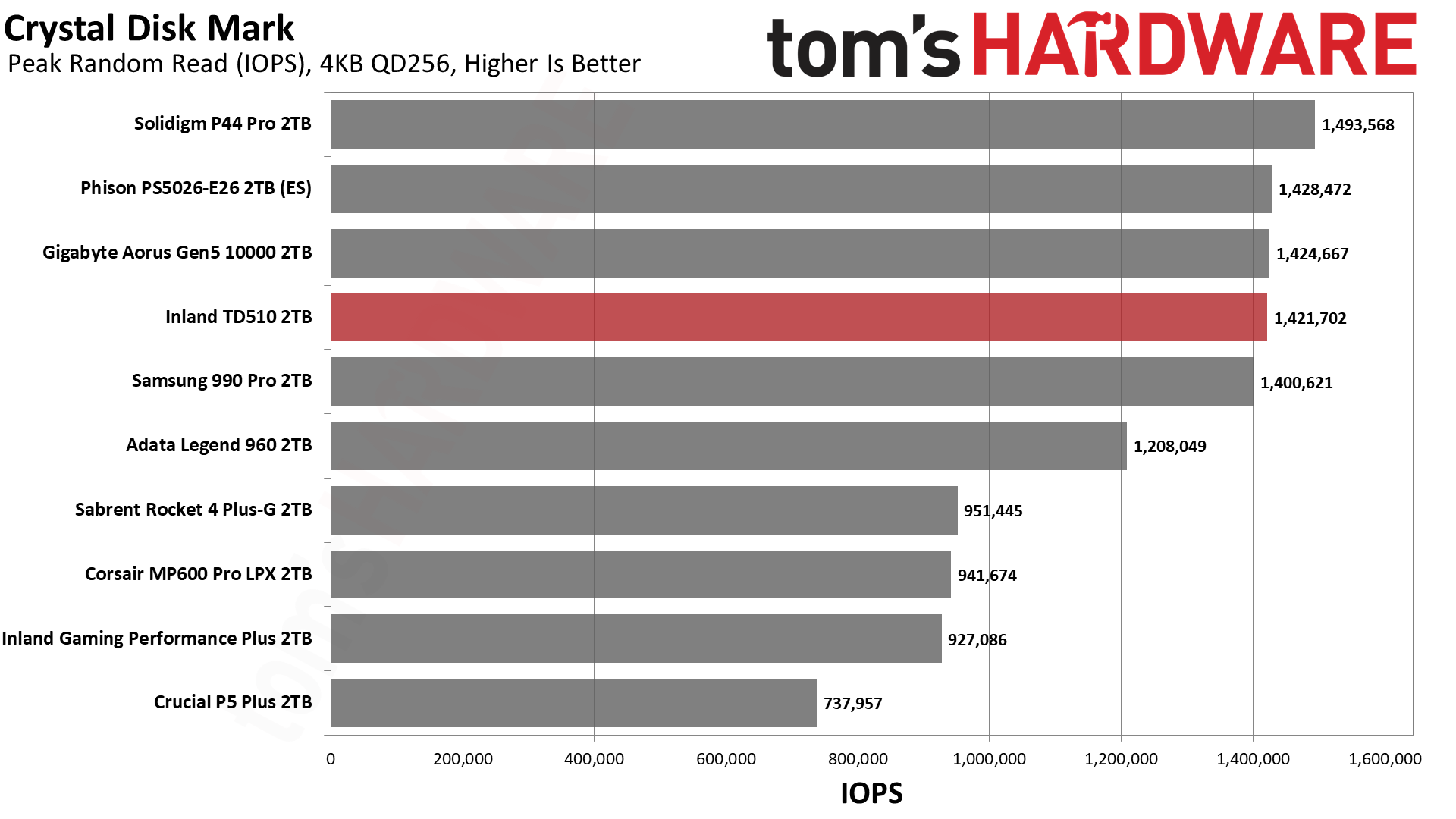



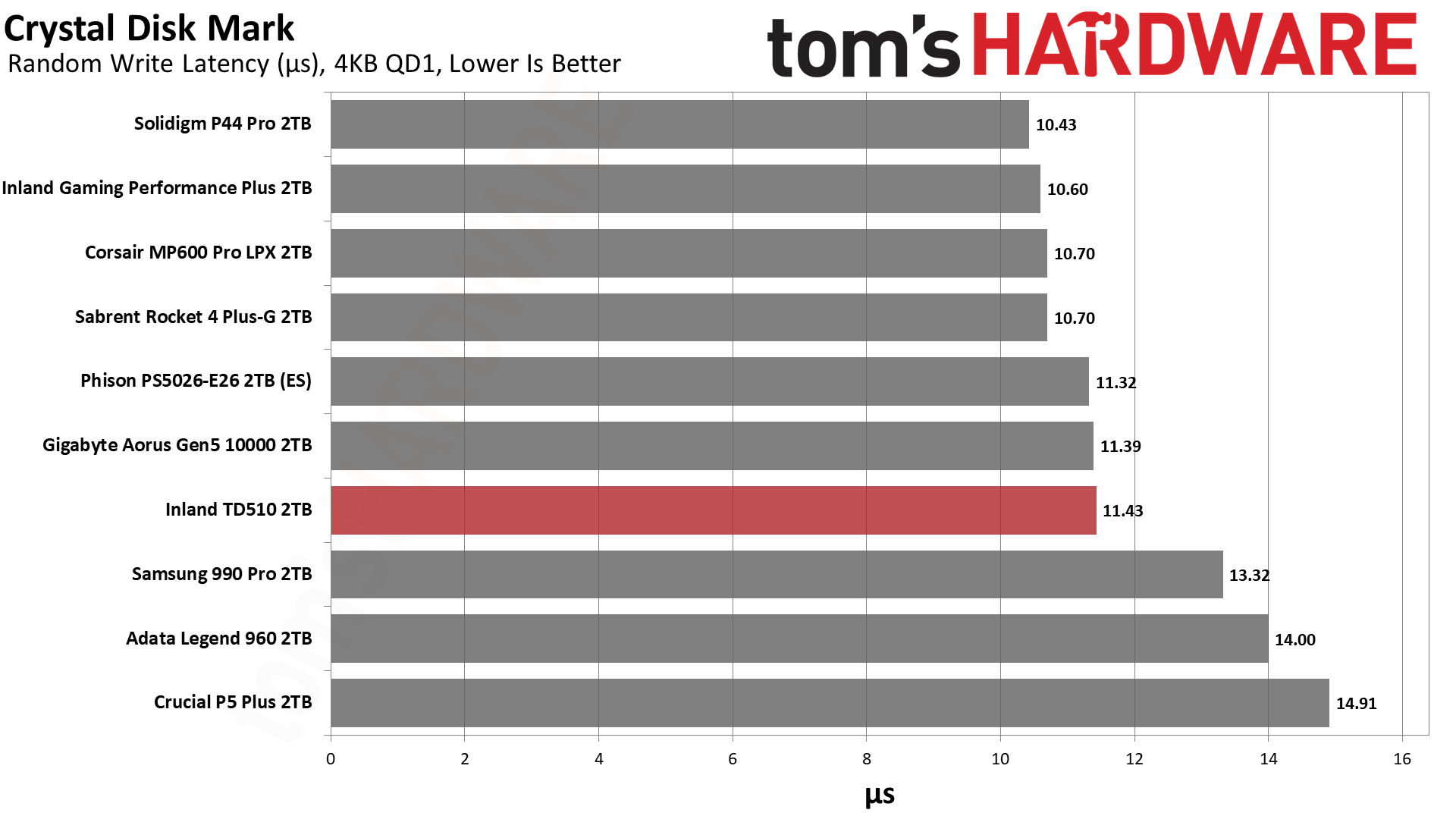
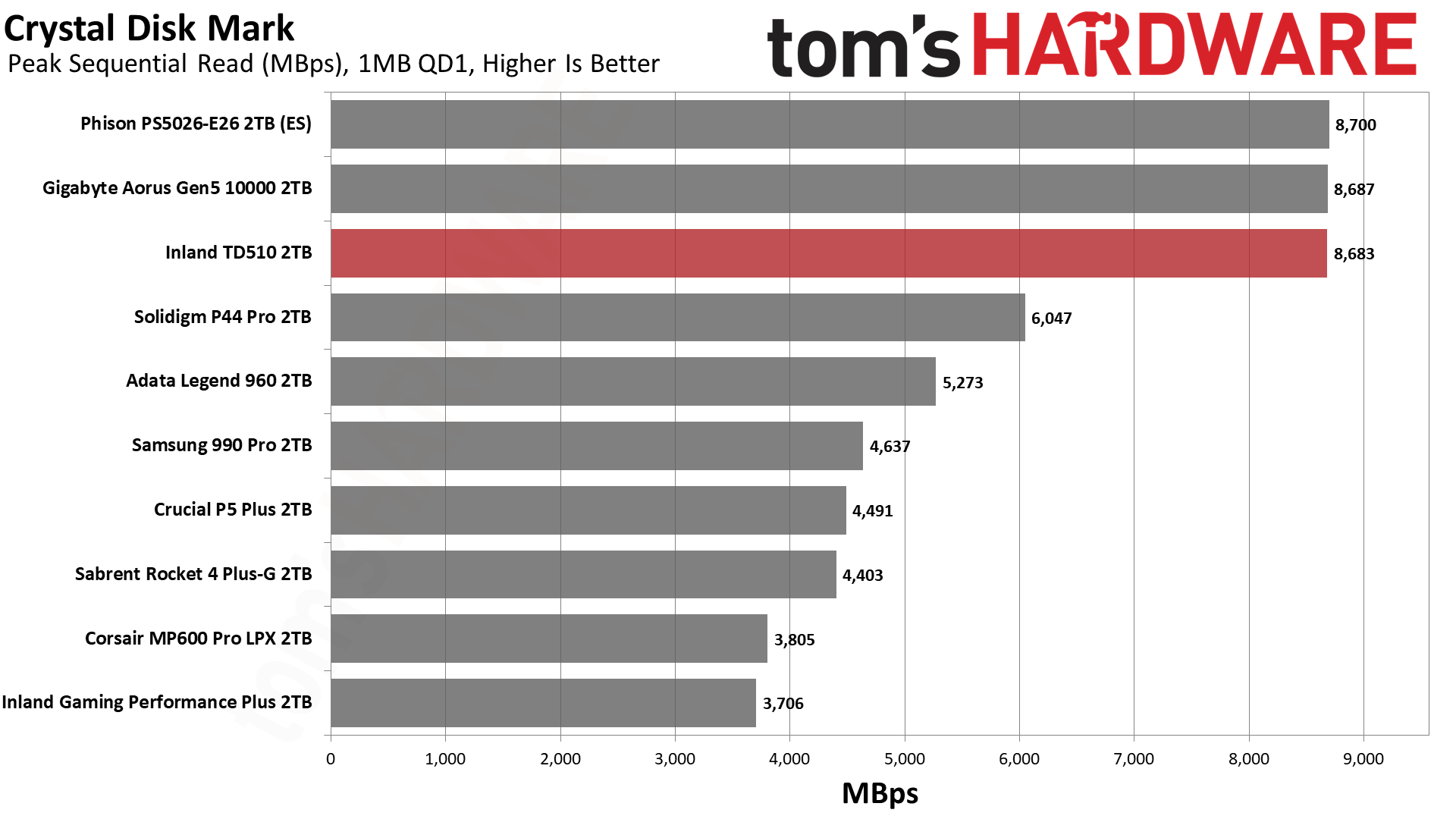
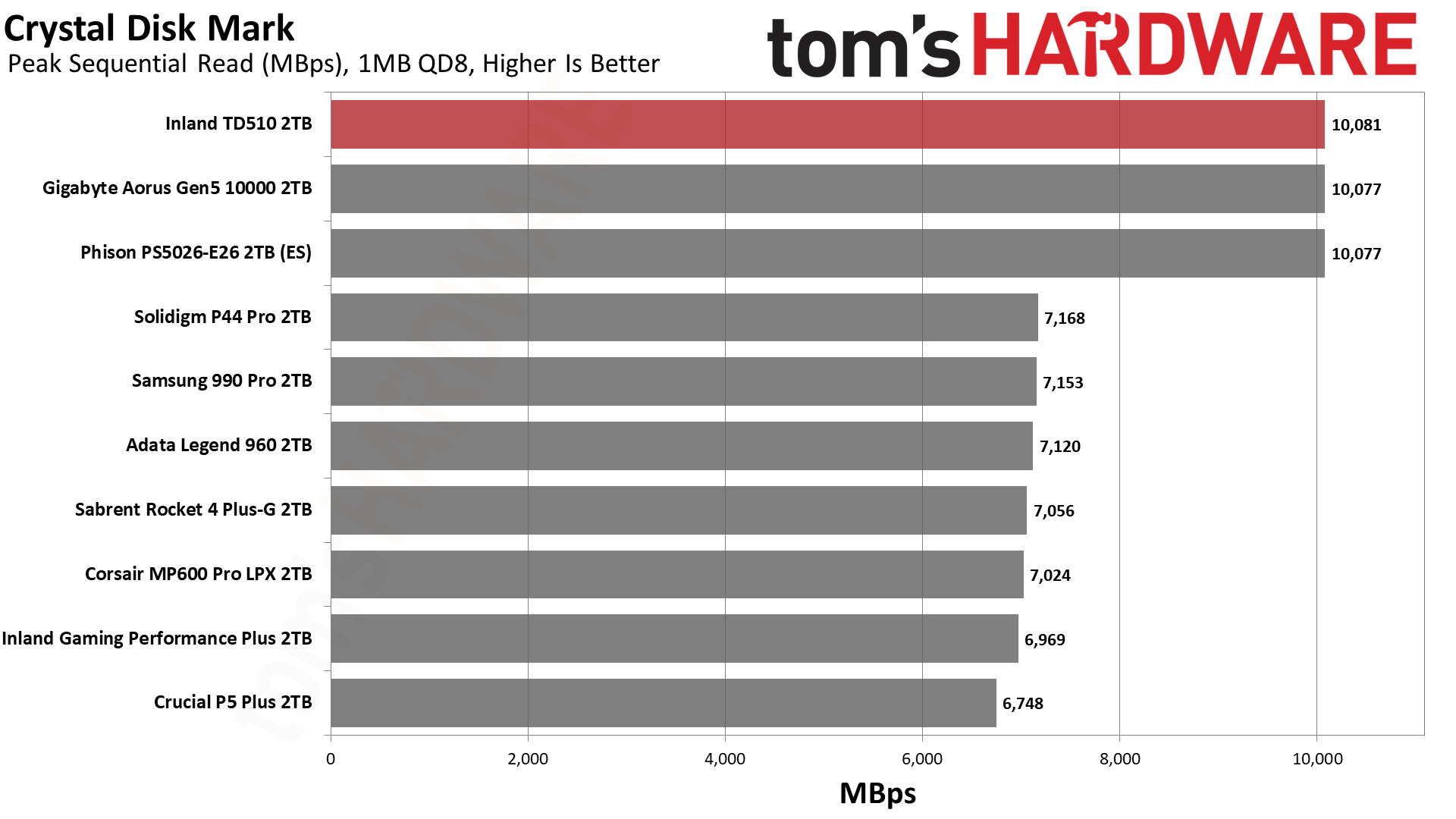

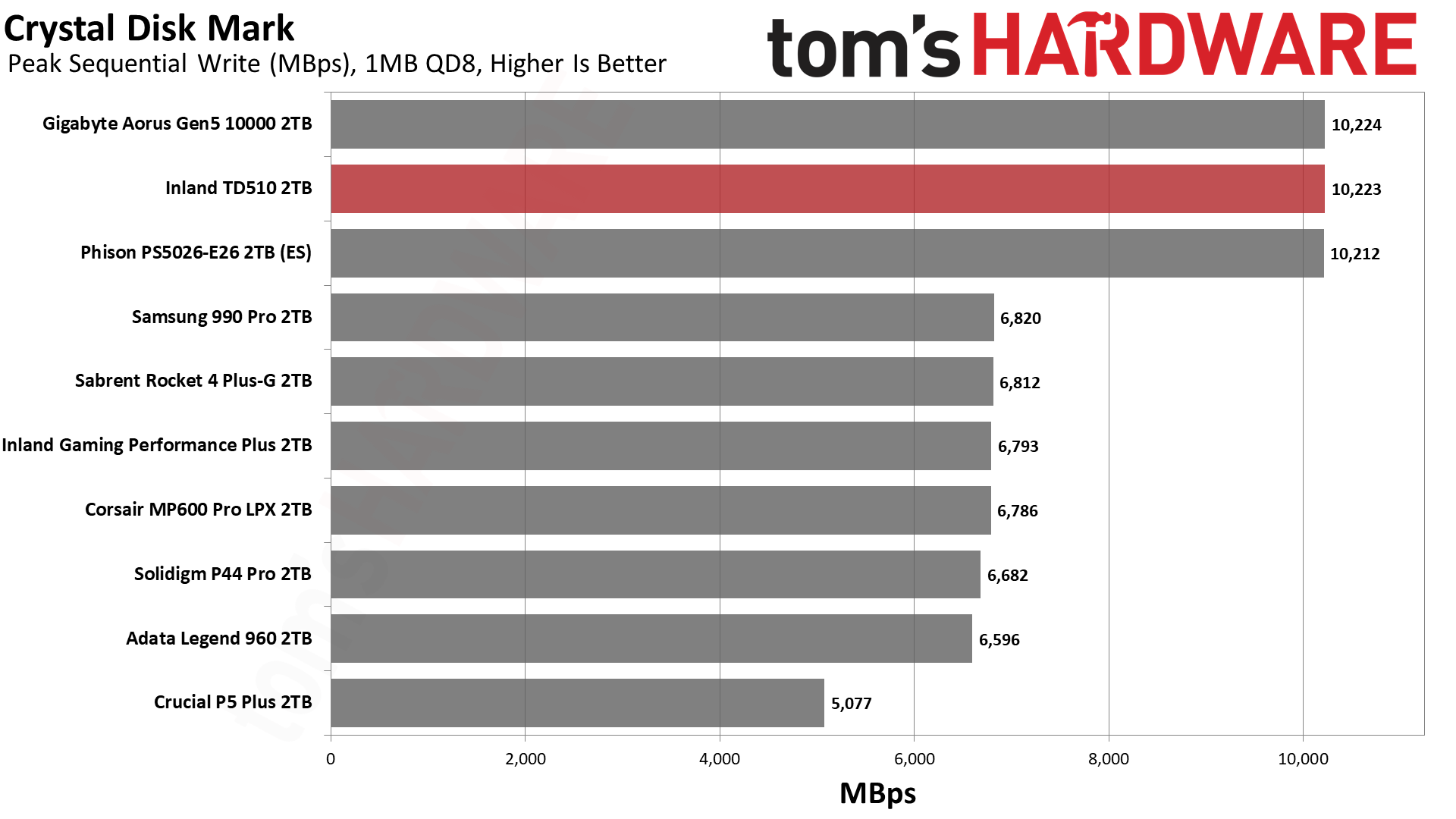
The TD510 is a solid performer in ATTO, although it drops at the 2MB block size for sequential reads. This matches the E26 ES. This may be a quirk of the E26’s optimization or a result of how the flash interleaves, given that 16 dies at six planes each with 16KiB physical pages would suggest a super-page up to 1.5MiB in size. The TD510 also dominates all PCIe 4.0 drives during the Crystal Disk Mark sequential read and write tests.
Random performance is unremarkable, with the 990 Pro besting the TD510 in read latency and several drives beating the TD510 in write latency. Again, this is a result of flash architecture, as the need for higher density requires compromise in other areas.
Sustained Write Performance and Cache Recovery
Official write specifications are only part of the performance picture. Most SSDs implement a write cache, which is a fast area of (usually) pseudo-SLC programmed flash that absorbs incoming data. Sustained write speeds can suffer tremendously once the workload spills outside of the cache and into the "native" TLC or QLC flash.
We use Iometer to hammer the SSD with sequential writes for 15 minutes to measure both the size of the write cache and performance after the cache is saturated. We also monitor cache recovery via multiple idle rounds.


There are no surprises here as the TD510 matches the E26 ES quite closely. The ~220GB pSLC cache can write at over 10.2GBps before the drive moderates to 3.5GBps in TLC. There’s also a slower folding state at around 1.4GBps on average. It’s possible we could see higher results with a 4TB drive. Recovery to TLC is relatively quick, but pSLC recovery takes more time.
Power Consumption
We use the Quarch HD Programmable Power Module to gain a deeper understanding of power characteristics. Idle power consumption is an important aspect to consider, especially if you're looking for a laptop upgrade as even the best ultrabooks can have mediocre storage.
Some SSDs can consume watts of power at idle while better-suited ones sip just milliwatts. Average workload power consumption and max consumption are two other aspects of power consumption, but performance-per-watt is more important. A drive might consume more power during any given workload, but accomplishing a task faster allows the drive to drop into an idle state more quickly, ultimately saving energy.

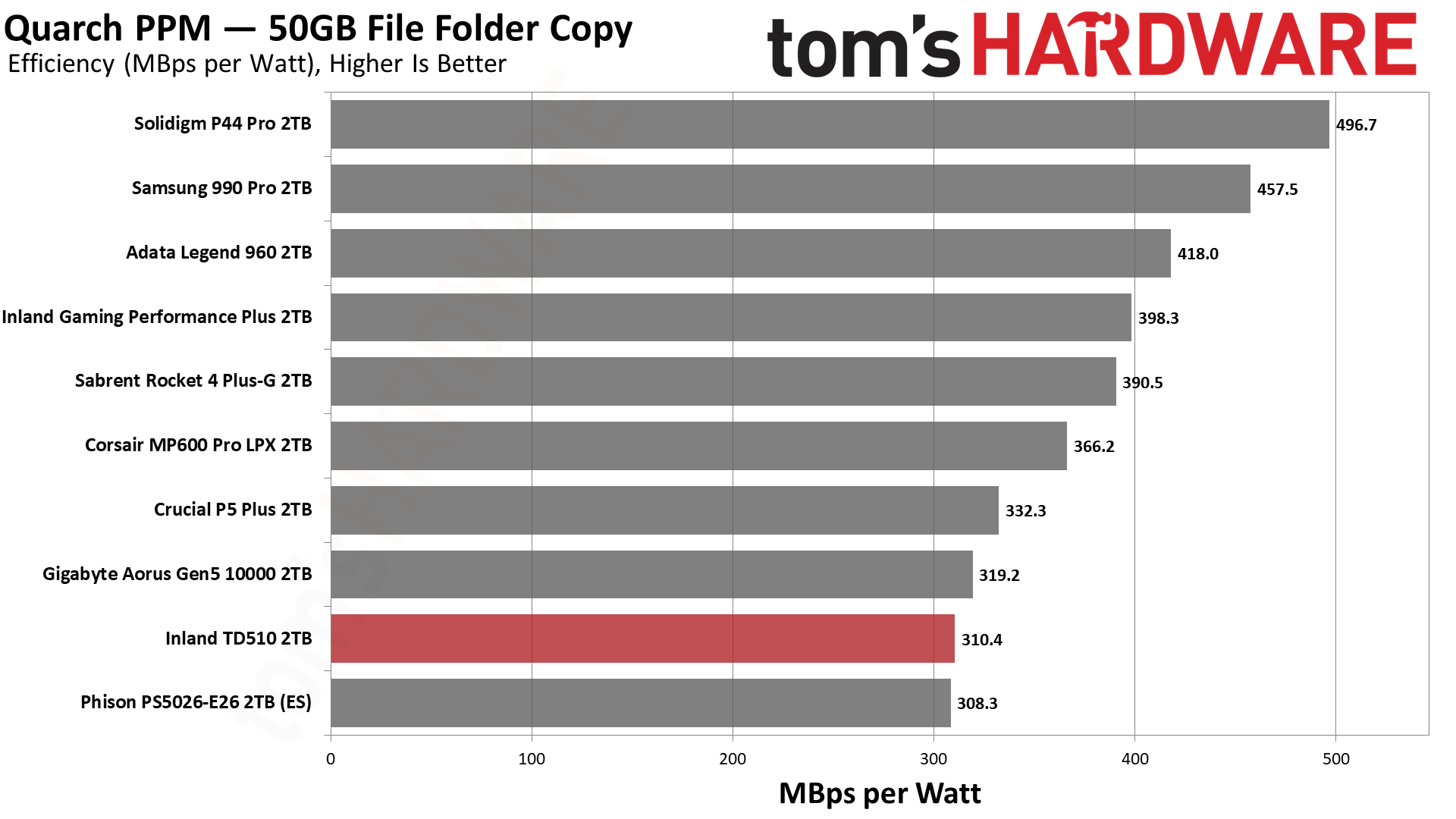
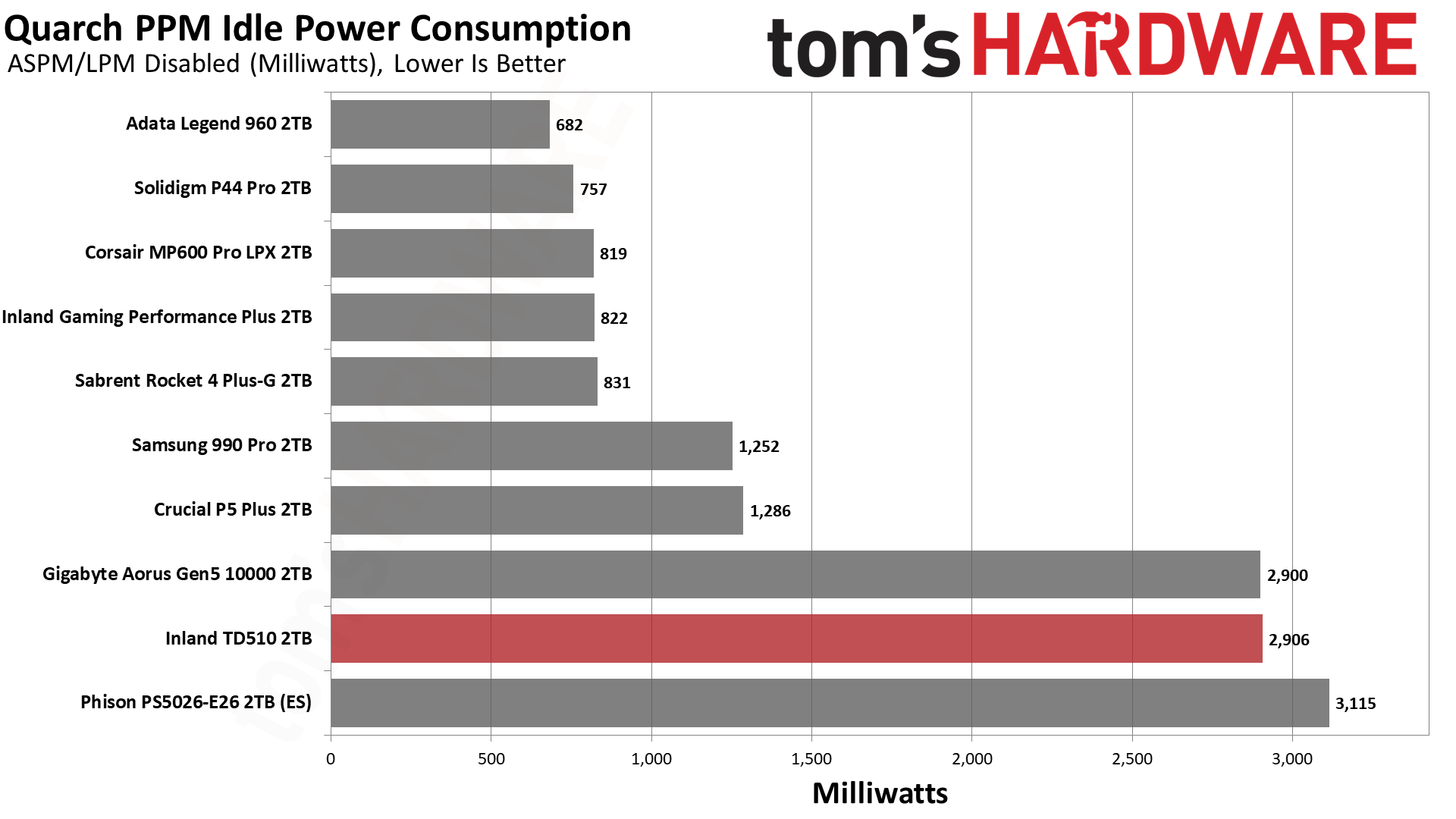

We had hoped that our power efficiency results for the E26 ES would be improved with further controller optimization. This is not the case, as the TD510 is quite inefficient. That being said, this is not a drive you buy for efficiency, especially as a large heatsink is all but required. There’s a bright future for more efficient drives, but this one isn’t quite there yet. Luckily, this drive is not intended for use in a laptop.
Test Bench and Testing Notes
| CPU | Intel Core i9-12900K |
| Motherboard | Asus ROG Maximus Z790 Hero |
| Memory | 2x16GB G.Skill DDR5-5600 CL28 |
| Graphics | Intel Iris Xe UHD Graphics 770 |
| CPU Cooling | Enermax Aquafusion 240 |
| Case | Cooler Master TD500 Mesh V2 |
| Power Supply | Cooler Master V850 i Gold |
| OS Storage | Sabrent Rocket 4 Plus-G 2TB |
| Operating System | Windows 11 Pro |
We use an Alder Lake platform with most background applications such as indexing, Windows updates, and anti-virus disabled in the OS to reduce run-to-run variability. Each SSD is prefilled to 50% capacity and tested as a secondary device. Unless noted, we use active cooling for all SSDs.
Bottom Line
The Inland TD510 surprised people by being available early. It surprised people again by dropping in price relatively rapidly. Anyone with access to a Micro Center can and has been able to enjoy PCIe 5.0 storage bandwidth for some time now by purchasing the TD510. It’s still an early product, but it is faster than 4.0 SSDs and is really meant for early adopters due to its requirements and the fact that faster drives are on the way.
The TD510 comes with the reference heatsink, which has an essentially worthless fan, which holds back our final score a bit. After getting rid of mechanical storage, the last thing you want is another failure point with added noise. However, even if the fan failed, it is so ineffective that it wouldn't make much of a difference.
The Inland TD510's DirectStorage optimization is nice for future-proofing, meaning you'll be able to blast through loading scenes in optimized games released in the future. The drive isn’t very power efficient, but that isn't too discouraging — the drive is clearly aimed at performance addicts with desktop PCs. The TD510 is fast for what it is; just be aware that the early PCIe 5.0 drives aren't as fast as newer models that will come later in the year.
MORE: Best SSDs
MORE: Best External SSDs and Hard Drives
MORE: How We Test HDDs And SSDs
MORE: All SSD Content

Shane Downing is a Freelance Reviewer for Tom’s Hardware US, covering consumer storage hardware.
-
Li Ken-un Lol really? This is a strike against a PCIe 5.0 device?Reply
Requires a PCIe 5.0 motherboard to take full advantage
It’s like “food; cons: * requires tastebuds to enjoy.” -
Avro Arrow Yeah, I'm not going to pay that much for an NVMe drive that requires active cooling which doesn't even work properly.Reply
My primary use for SSDs is game-loading. For that task, the difference between SATA-III and PCI-Express v4.0 is nigh imperceptible. Therefore, PCI-Express v5.0 wouldn't do anything except bleed my wallet dry. -
johnwkuntz Reply
Shane, I have to ask,,,are you deaf as a fence post? I bought the drive and after one evening in a Fractal Pop Air case I had to swap out the heatsink for this...Admin said:The Inland TD510 is the first accessible baseline PCIe 5.0 NVMe SSD, and it’s been priced aggressively. This makes it the first chance at getting this type of bandwidth for your desktop.
Inland TD510 SSD Review: The First Widely Available PCIe 5.0 SSD : Read more
Warp Shield Hhttps://www.wizmaxglobal.com/products/CATEGORY_ACCESSORIES/WARP-SHIELD-HNot only is the fan on the stock heatsink ineffective, It is unbelievably loud, How can something that small make that much noise? BTW I think this heatsink might also do the trick for those wanting something a tad smaller... https://www.wizmaxglobal.com/products/CATEGORY_ACCESSORIES/WARP-SHIELD-SYou just basically want something cooling both faces of the drive. Both are fairly cheap on Amazon. -
terroralpha ReplyAvro Arrow said:Yeah, I'm not going to pay that much for an NVMe drive that requires active cooling which doesn't even work properly.
My primary use for SSDs is game-loading. For that task, the difference between SATA-III and PCI-Express v4.0 is nigh imperceptible. Therefore, PCI-Express v5.0 wouldn't do anything except bleed my wallet dry.
i got this SSD as a warranty replacement for a dead gen 4 inland SSD. it doesn't need the active cooling. the is a meme to make the SSD seem more "1337 gAm3r" for the kids who don't know any better.
i'm using the SSD heatsink that came with my asus X670E-E, and it works fine. i use this computer for work and gaming. it's on about 10 hours a day mon-fri. no issues in 5+ months of use. -
Avro Arrow Reply
It really blows my mind how these "current-gen" NVMe drives can get so hot when they're often not even being used at their top-rated speeds. It tells me that they're not overly-efficient.terroralpha said:i got this SSD as a warranty replacement for a dead gen 4 inland SSD. it doesn't need the active cooling. the is a meme to make the SSD seem more "1337 gAm3r" for the kids who don't know any better.
i'm using the SSD heatsink that came with my asus X670E-E, and it works fine. i use this computer for work and gaming. it's on about 10 hours a day mon-fri. no issues in 5+ months of use. -
Order 66 Reply
I would say I disagree, because I do notice faster loading times going from my old system with a SATA SSD to my new system with an NVME SSD, but most of that is probably because I also went from an i5 6500 to a 7700x, and from an RX 550 to an RX 6800. I will say I do notice faster file copying speeds though, which is huge for me as I like to play games with mods, and some mods can be fairly large.Avro Arrow said:Yeah, I'm not going to pay that much for an NVMe drive that requires active cooling which doesn't even work properly.
My primary use for SSDs is game-loading. For that task, the difference between SATA-III and PCI-Express v4.0 is nigh imperceptible. Therefore, PCI-Express v5.0 wouldn't do anything except bleed my wallet dry. -
Avro Arrow Reply
Yeah, it can make a difference in file-copying but I don't do that very often. The copies that I do make are generally game files moved over to one of my 8TB hard drives so that I only ever have to download a game once. If I feel like playing an older game that I haven't played in awhile, I just copy it back over. Sure, it might not be as fast as using a PCIe5 NVMe drive, but it's blazingly fast compared to downloading it from Steam again! :LOL:Order 66 said:I would say I disagree, because I do notice faster loading times going from my old system with a SATA SSD to my new system with an NVME SSD, but most of that is probably because I also went from an i5 6500 to a 7700x, and from an RX 550 to an RX 6800. I will say I do notice faster file copying speeds though, which is huge for me as I like to play games with mods, and some mods can be fairly large.
They also don't get hot enough to do any damage to themselves or anything else and to me, that's a much bigger plus than having some extra speed. My system drive is a WD Black SN770 512GB PCIe4 NVMe and it gets noticeably hotter than any of my PCIe3 NVMe drives. I had a Lexar 2TB drive burn itself out and even though it was a PCIe3 NVMe, it made me pretty cautious about things like that. If a drive needs active cooling, I don't need that drive.
